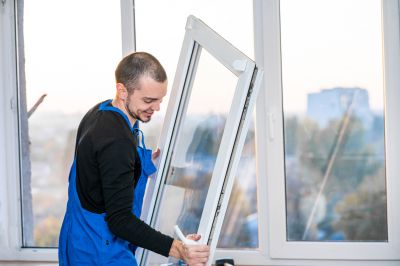Leading Storm Damage Repair Products For Effective Restoration Work
Equip yourself with trusted supplies designed to handle the challenges of storm-related property restoration.
 Storm restoration efforts in Panama City, FL require a comprehensive approach to repair and reinforce properties affected by severe weather events. The selection of appropriate products plays a vital role in ensuring structures are resilient against future storms. From roofing materials to waterproofing solutions, there is a wide array of products designed to mitigate damage and enhance safety. Properly choosing and installing these products can help property owners protect their investments and maintain safety during unpredictable weather conditions.
Storm restoration efforts in Panama City, FL require a comprehensive approach to repair and reinforce properties affected by severe weather events. The selection of appropriate products plays a vital role in ensuring structures are resilient against future storms. From roofing materials to waterproofing solutions, there is a wide array of products designed to mitigate damage and enhance safety. Properly choosing and installing these products can help property owners protect their investments and maintain safety during unpredictable weather conditions.
Top Overall Option
Reinforced Roofing System
A reinforced roofing system combines high-quality materials with advanced fastening techniques to provide enhanced resistance against high winds and debris impact. These systems often include impact-resistant shingles, metal panels, and hurricane straps to secure the roof structure. Properly installed, they can offer a significant layer of protection, helping to prevent costly damage during storms.
Types of Products For Storm Restorations
Impact-Resistant Windows
Designed to withstand flying debris, impact-resistant windows help protect the interior of buildings during storms. They are often made with laminated glass and reinforced frames to enhance durability.
Hurricane Straps and Tie-Downs
These hardware components secure the roof to the walls and foundation, providing additional stability against high winds and uplift forces.
Waterproof Sealants and Barriers
Sealants and barriers prevent water intrusion around windows, doors, and roof penetrations, reducing the risk of water damage and mold.
Storm-Resistant Doors
Reinforced doors with impact-resistant panels and secure locking mechanisms help maintain structural integrity during severe weather.
Structural Reinforcements
Includes braces, tie-downs, and additional framing components designed to strengthen vulnerable parts of a building’s structure.
Flood Barriers and Sandbags
Temporary or permanent barriers that help divert floodwaters away from properties, reducing water damage.
Roof Ventilation Systems
Proper ventilation helps maintain roof integrity and reduce internal pressure during storms.
Gutter Guards and Drainage Solutions
Prevent blockages and ensure proper water runoff to minimize water-related damage.
Siding and Exterior Cladding
Impact-resistant siding materials protect the exterior walls from debris and weather elements.
Emergency Power Backup Systems
Generators and backup power sources ensure essential systems remain operational during outages.
Portable Weather Shelters
Temporary shelters designed to provide safety during severe weather events.
Dehumidifiers and Air Purifiers
Help manage indoor air quality and moisture after storm-related water intrusion.
Fireproofing Materials
Additional protection for properties at risk of fire following storms or power outages.
Temporary Fencing and Barricades
Secure property perimeters during cleanup and repair phases.
Popular Choices
Widely used for their ability to withstand debris impact, these windows are common in storm-prone areas.
Essential for reinforcing roof attachments and preventing uplift during high winds.
Popular for their durability and ability to resist wind uplift and debris impact.
Frequently used to protect properties from floodwaters and water intrusion.
Chosen for their impact resistance and added security during storms.
Commonly applied around windows and doors to prevent water intrusion.
Help ensure proper drainage and prevent water buildup during heavy rains.
Popular for enhancing building stability in storm-prone regions.
Used for temporary safety during severe weather events.
Commonly used after storms to control indoor moisture and prevent mold growth.
Chosen for exterior protection against debris and wind damage.
Popular for maintaining power supply during outages caused by storms.
In storm-prone areas like Panama City, it is essential to focus on durable and reliable products that can withstand high winds, heavy rain, and flying debris. This includes reinforced roofing systems, impact-resistant windows, and water barriers. Additionally, structural reinforcements such as hurricane straps and tie-downs can provide extra stability. The right combination of products not only helps in immediate recovery but also contributes to long-term resilience.
When selecting storm restoration products, consideration of local building codes and regulations is crucial. Many products are designed to meet or exceed these standards, ensuring compliance and safety. Proper installation by qualified professionals is equally important to maximize effectiveness. Regular maintenance and inspections can further prolong the lifespan of storm-resistant features, ensuring continuous protection for your property.
Overall, a strategic approach to storm restoration involves understanding the variety of products available and their specific applications. By investing in suitable materials and solutions, property owners in Panama City can better prepare for future weather events, minimizing potential damage and facilitating quicker recovery.
Key Buying Considerations
- Assess the specific storm risks in your area, such as wind speeds and flood potential.
- Ensure products comply with local building codes and standards for storm resistance.
- Consider the durability and impact resistance of materials used in critical areas like windows and roofing.
- Evaluate the ease of installation and whether professional help is needed for proper setup.
- Look for products with proven performance in storm-prone regions, even if not branded.
- Factor in the long-term maintenance requirements of storm protection products.
- Determine the level of protection needed based on property size and vulnerability.
- Check for warranty and support options for the products you choose.
- Plan for temporary protection solutions like barriers and shelters during emergency situations.
- Consider compatibility with existing structures to ensure seamless integration.
- Prioritize products that can be easily upgraded or reinforced over time.
- Review customer feedback and expert recommendations for insights on product effectiveness.
- Think about the accessibility of replacement parts or repair services locally.
- Budget for both initial installation costs and ongoing maintenance expenses.
- Stay informed about new innovations or updates in storm protection technology.
